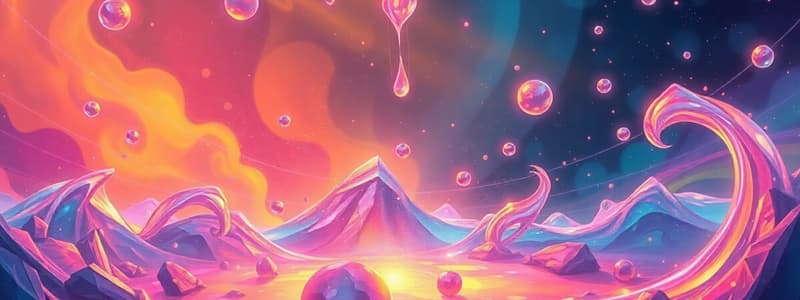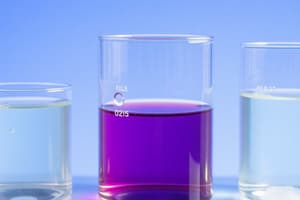Podcast
Questions and Answers
What does the majority of individuals experience in response to the dose according to the graph?
What does the majority of individuals experience in response to the dose according to the graph?
- No effect
- A higher than average effect
- A minimal effect
- An average effect (correct)
Which group is represented by the smallest number of individuals in the response to the dose?
Which group is represented by the smallest number of individuals in the response to the dose?
- Individuals with a moderate response
- Individuals with a slightly positive response
- Sensitive individuals (correct)
- Individuals with no effect
Based on the graph's distribution, what happens to the number of individuals as the effect of the dose increases?
Based on the graph's distribution, what happens to the number of individuals as the effect of the dose increases?
- It becomes uniformly distributed
- It decreases as the effect becomes greater
- It remains constant regardless of the effect
- It increases until it reaches a peak and then declines (correct)
How does the graph characterize resistant individuals?
How does the graph characterize resistant individuals?
What axis represents the effect of the dose in the graph?
What axis represents the effect of the dose in the graph?
Which liquid has the highest specific gravity among the ones shown in the test tube?
Which liquid has the highest specific gravity among the ones shown in the test tube?
What is the specific gravity of mineral oil?
What is the specific gravity of mineral oil?
In the provided layering of liquids, what will happen if you add a liquid with a specific gravity of 0.8 to the test tube?
In the provided layering of liquids, what will happen if you add a liquid with a specific gravity of 0.8 to the test tube?
If you were to add a liquid with a specific gravity of 1.2 to the test tube, what would occur?
If you were to add a liquid with a specific gravity of 1.2 to the test tube, what would occur?
Which of the following correctly describes the order of the liquids in the test tube?
Which of the following correctly describes the order of the liquids in the test tube?
Flashcards
Specific Gravity of Liquids
Specific Gravity of Liquids
A measure of how dense a liquid is compared to water.
Mineral Oil Density
Mineral Oil Density
Mineral oil has a lower specific gravity (0.89) than water (1.00).
Water Density
Water Density
Water has a specific gravity of 1.00.
Chloroform Density
Chloroform Density
Signup and view all the flashcards
Liquid Layering
Liquid Layering
Signup and view all the flashcards
Immiscible Liquids
Immiscible Liquids
Signup and view all the flashcards
Specific Gravity Order (Example)
Specific Gravity Order (Example)
Signup and view all the flashcards
Dose response distribution
Dose response distribution
Signup and view all the flashcards
X-axis of dose response graph
X-axis of dose response graph
Signup and view all the flashcards
Y-axis of dose response graph
Y-axis of dose response graph
Signup and view all the flashcards
Average response
Average response
Signup and view all the flashcards
Resistant individuals
Resistant individuals
Signup and view all the flashcards
Sensitive individuals
Sensitive individuals
Signup and view all the flashcards
Graph Title (English translation)
Graph Title (English translation)
Signup and view all the flashcards
Study Notes
Figure 5.1
- Depicts layering of immiscible liquids in a test tube
- Mineral oil is lighter than water
- Chloroform is heavier
- Layers are arranged in order of increasing density
- Mineral oil (sp gr 0.89)
- Water (sp gr 1.00)
- Chloroform (sp gr 1.47)
Studying That Suits You
Use AI to generate personalized quizzes and flashcards to suit your learning preferences.




